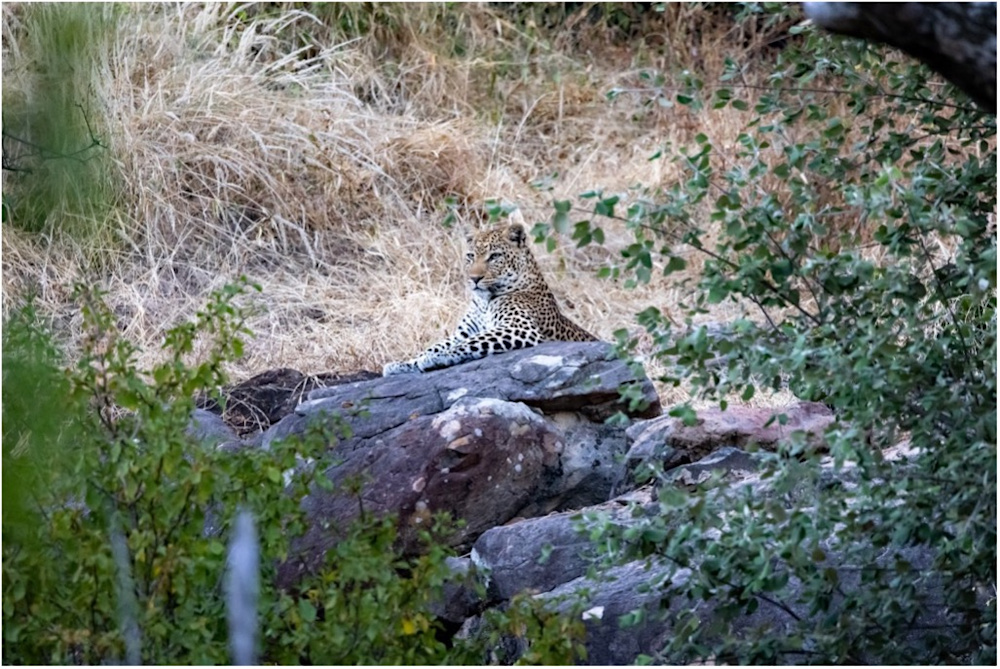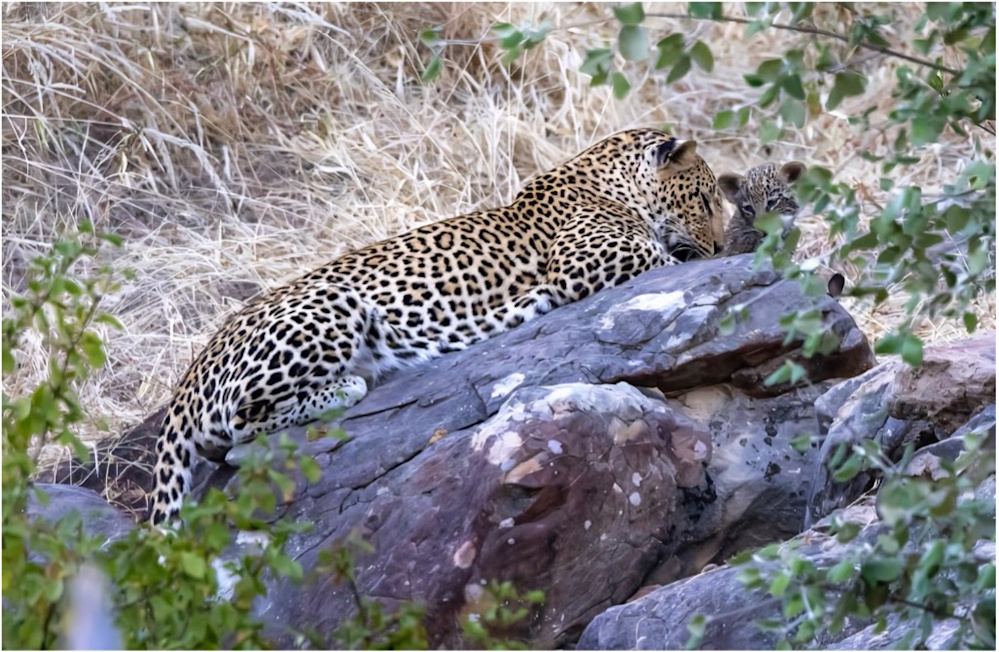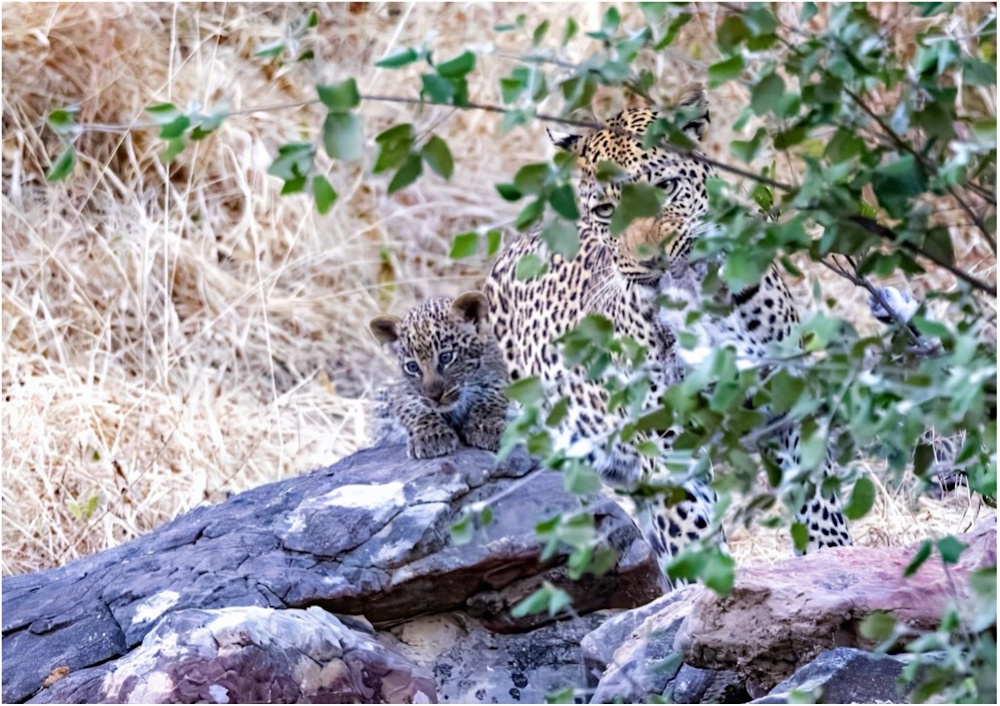May 2025
Biodiversity
The ultimate sighting
in BiodiversityShare:
The ultimate sighting
Ultimate Drive is a beautiful, somewhat bumpy, winding track between a network of ridges, and it is the chosen denning area of a leopard we see regularly in the area that’s close to the lodge. It was tracker Robert’s sharp eyes that spotted her lying on a rock at sunrise.
She last had a litter of two cubs born in about November 2023. Leopard cubs typically leave their mothers at around 12 to 18 months old. However, this can vary depending on individual circumstances and survival rates. In some cases, they may stay with their mother until they are about two years old. A leopard’s gestation period is about 100 days.
She seemed to be focused on something at the base of the rock, and was quite brazen in the way she lay in full view. We viewed her from some distance away, using binos or long camera lenses as to not disturb the situation, but every now and again we thought we detected movement at the base of the rocks.

Then she got up, walked down to the base of a rock and picked up something in her mouth that was stashed in a crevice. Was it a cub? No, our binos confirmed it was a young scrub hare. She carried it up to the top of the rock again, and then batted it about a little – as if it were still alive or trying to make it look alive.
Then she made the most glorious sound in the world, the soft, unmistakable “ooowwwhh” sound that’s used to call young cubs. Eventually two little blurs of spots moved behind her – her two new cubs. They were so young they still had that bluish baby tint to their eyes. They were only about 10 to 12 weeks old. It was hard to glimpse them, let alone get a photo. They must have been born in March 2025, so that’s a very short time to have raised a litter to independence (if that is what has happened) and had a new litter.
She then spent some time trying to entice the youngsters to “catch” the hare and feed on it. I’ve seen this particular leopard catch hares for previous litters and it is such a clever choice of prey. A hare is the right size meal for young cubs, it is relatively easy to catch and carry back to the den, and the meat is tender and easily torn apart into little bite-sized chunks.

However, the cubs didn’t really seem to be lapping up their introduction to solids. You could see they weren’t exactly sure what they were meant to do with the furry offering, other than play with it. No doubt they would have preferred to suckle from their mother – you could see her suckle marks, but this wise and accomplished mother was enforcing the weaning and introduction to solids stage. After a while you could see she became quite cross with them and vocalised far more fiercely. Then she picked up the hare and walked off determinedly into the bushes, with the two of them scampering behind her in chastised pursuit.

The first glimpses of the blue-eyed cubs as their mother tries to entice them to feed on a scrub hare.


By Jenny Hishin
Author / Field Guide


